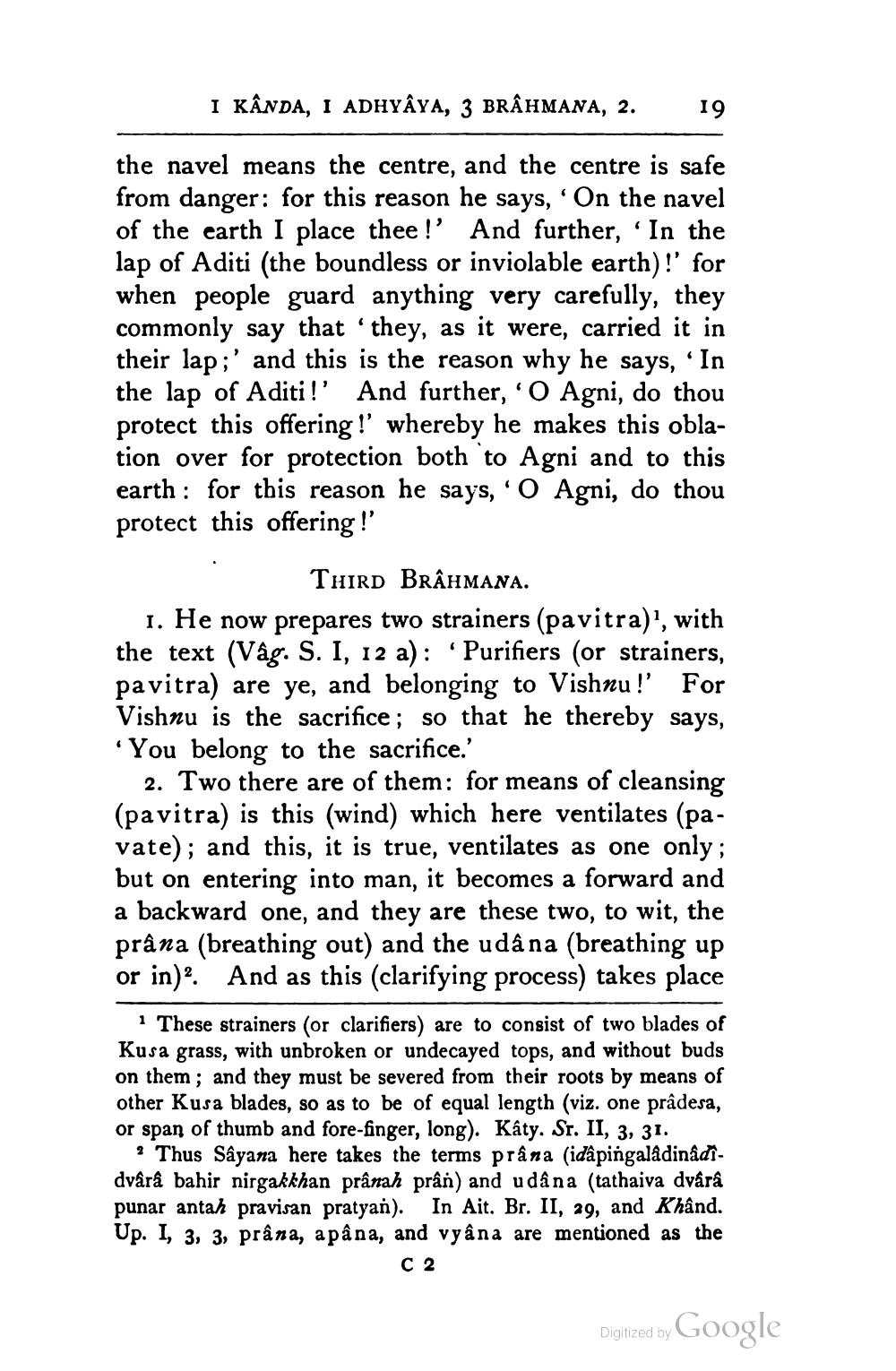________________
I KÂNDA, 1 ADHYÂVA, 3 BRÂHMANA, 2.
19
the navel means the centre, and the centre is safe from danger: for this reason he says, 'On the navel of the earth I place thee!' And further, 'In the lap of Aditi (the boundless or inviolable earth)!' for when people guard anything very carefully, they commonly say that 'they, as it were, carried it in their lap;' and this is the reason why he says, 'In the lap of Aditi!' And further, 'O Agni, do thou protect this offering !' whereby he makes this oblation over for protection both to Agni and to this earth: for this reason he says, 'O Agni, do thou protect this offering!
THIRD BRAHMANA. 1. He now prepares two strainers (pavitra)', with the text (Vág. S. I, 12 a): Purifiers (or strainers, pavitra) are ye, and belonging to Vishnu!' For Vishnu is the sacrifice; so that he thereby says, You belong to the sacrifice.'
2. Two there are of them: for means of cleansing (pavitra) is this (wind) which here ventilates (pavate); and this, it is true, ventilates as one only; but on entering into man, it becomes a forward and a backward one, and they are these two, to wit, the prâna (breathing out) and the udâ na (breathing up or in)? And as this (clarifying process) takes place
1 These strainers (or clarifiers) are to consist of two blades of Kusa grass, with unbroken or undecayed tops, and without buds on them; and they must be severed from their roots by means of other Kusa blades, so as to be of equal length (viz. one prâdesa, or span of thumb and fore-finger, long). Kâty. Sr. II, 3, 31.
? Thus Sâyana here takes the terms prâna (idâpingaládinadi dvåra bahir nirgakkhan prânah prân) and u dâna (tathaiva dvåra punar antah pravisan pratyan). In Ait. Br. II, 29, and Khând. Up. I, 3, 3, prâna, a pâna, and vyâna are mentioned as the
C2
Digitized by Google




